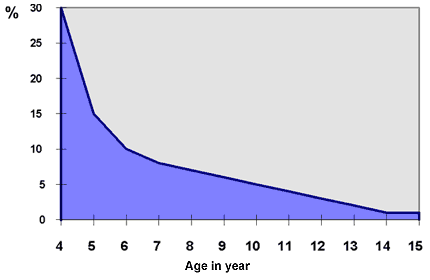
The Stresses of life especially in the time of the COVID-19 Pandemic difficulty with sleep is affecting our students more than ever. This post is aimed at a variety of tools and ideas to support your struggling sleeper.
Sleep Hygiene for Children
Preschoolers (ages 3-5 years) generally need between 10-13 hours of sleep per night, and
school-age children (ages 6-13 years) need between 9-11 hours of sleep per night.
- Stick to the same bedtime and wake time every day, even on weekends. Children sleep
better when they have the same bedtime and wake time every day. Staying up late
during the weekend and then trying to catch up on sleep by sleeping in can throw off a
child’s sleep schedule for several days. - Beds are for sleeping. Try to use your bed only for sleeping. Lying on a bed and doing
other activities (e.g., watching TV, using a tablet or computer) makes it hard for your brain
to associate your bed with sleep. - A comfy, cozy room. A child’s bedroom environment should be cool, quiet, and
comfortable. - Alarm clocks are for waking up. Children who tend to stare at the clock, waiting and
hoping to fall asleep should have the clock turned away from them. - Bedtime routine. A predictable series of events should lead up to bedtime. This can
include brushing teeth, putting on pajamas, and reading a story from a book. - Quiet, calm, and relaxing activities. Before bedtime is a great time to relax by listening to
soft, calming music or reading a story. Avoid activities that are excessively stimulating right
before bedtime. This includes screen time like watching television, using a tablet or computer, and playing video games, as well as physical exercise. Avoid these activities during
a nighttime awakening as well. It is best to keep video games, televisions, or phones out of
the bedroom and to limit their use at least 1 hour before bedtime. - How to relax. If a child needs help relaxing, they can use techniques such as taking deep
and slow breaths or thinking of positive images like being on a beach. - Start the day off right with exercise. Exercising earlier in the day can help children feel
more energetic and awake during the day, have an easier time focusing, and even help
with falling asleep and staying asleep later on that evening. - Avoid caff eine. Avoid consuming anything with caff eine (soda, chocolate, tea, coff ee)
in the late afternoon and throughout the evening. It can still cause nighttime awakenings
and shallow sleep even if it doesn’t prevent one from falling asleep. - If you can’t sleep, get out of bed. If a child is tossing and turning in bed, have them get
out of bed and do something that isn’t too stimulating, such as read a boring book (e.g.,
textbook). They can return to bed once they are sleepy again. If they are still awake after
20-30 minutes, they can repeat the process and get out of bed for another 20 minutes
before returning. Doing this prevents the bed from being associated with sleeplessness. - Put kids to sleep drowsy, but awake. The ideal time for a child to go to bed is when they
are drowsy, but still awake. Allowing them to fall asleep in places other than their
bed teaches them to associate sleep with other places than their bed. - Cuddle up with a stuff ed animal or soft blanket. Giving a child a security object can be
a good transition to help them feel safe when their parent(s) isn’t/aren’t there.
Try to incorporate a doll, toy, or a blanket to comfort them when it’s time for bed. - Bedtime checkups should be short and sweet. When checking up on a child, the main
purpose is to let them know you are there and that they are all right. The briefer and less
stimulating, the better. - Maintain a sleep diary in order to track naps, bedtimes, wake times, and behaviors to
fi nd patterns and work on particular problems when things are not going well.

ARTICLES
HOW TO GET BEDTIMES BACK ON TRACK
THE GOOD-NIGHT GUIDE FOR CHILDREN
Encouraging your child to have good sleep habits
NASP Sleep Problems: Helping Handout for Home
NASP Bedtime Guidelines for Parents
KIDS BOOKS
List of Kids book about sleep by Common Sense Media
Lesson Plans
Bedtime Routines to Improve Sleep Habits (K-2)
Bedtime Routines to Improve Sleep Habits (3-5 grade)
Games

Sleep for Kids Games and Puzzles
Measurement
Child and Adolescent Sleep Checklist– Child and Adolescent Sleep Checklist (CASC) is designed to identify sleep habits and to make a screening of sleep problems among preschoolers, elementary school children, and high school students.This might be helpful for School Psychologists or school teams who want to really understand if a child is experiencing a sleep disturbance and to what degree.
CHILDREN’S SLEEP HABITS QUESTIONNAIRE(ABBREVIATED) Parent-reported screening survey designed to assess behaviorial and medically based sleep problems in school children, aged 4-10 years.






